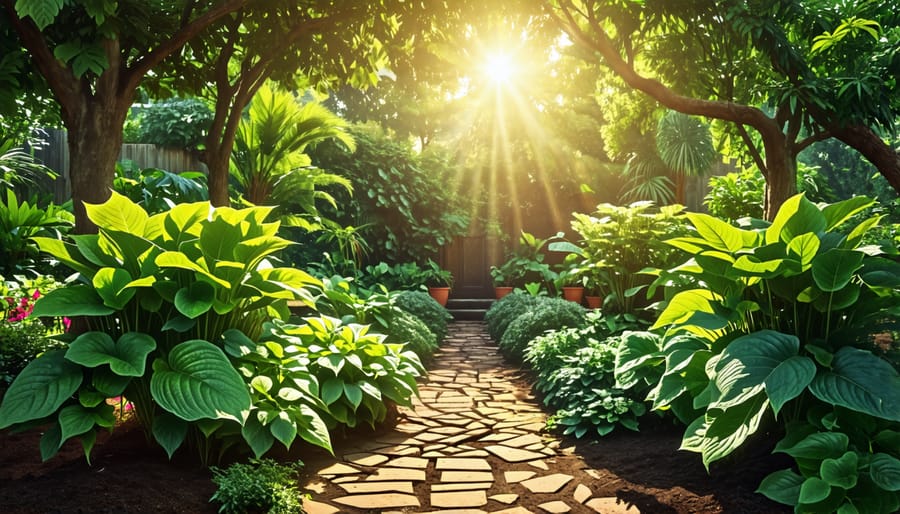Cultivate Kratom at Home: Your Journey to a Tranquil and Thriving Garden

Start by selecting a sunny spot that receives filtered, indirect light to create an ideal microclimate for kratom, ensuring optimal growth conditions. Choose loose, well-draining soil rich in organic matter to foster strong roots and healthy leaves, echoing its native Southeast Asian habitat. Water regularly but avoid oversaturation, allowing the topsoil to dry slightly between sessions to keep your kratom thriving. Maintain humid conditions by misting the plants or using a humidity tray, vital for mimicking the moist environment kratom plants naturally prefer.
Understanding Kratom’s Growing Needs
Climate and Soil Considerations
Growing kratom in your home garden can be an incredibly rewarding experience, connecting you to the lush traditions of Southeast Asia right from your backyard. This hearty tropical tree thrives best in a climate that mimics its native land—humid, warm, and bathed in soft sunlight filtered through high canopies. If you live in a region with mild winters and plenty of rainfall, your garden might just be the perfect home for kratom.
Imagine stepping into your garden, where the air is thick with the comforting scent of moist earth and leaves. In this environment, kratom will require a thoughtfully chosen spot, ideally where it can enjoy morning sun and afternoon shade, much like cradling a cherished family tradition within the embrace of nature. For those in cooler climates, consider growing kratom in portable pots that can be relocated indoors during chilly seasons, keeping your green legacy flourishing year-round.
Now, think of the soil as the nurturing blanket that will keep your kratom snug and thriving. This tree desires rich, loamy soil that is both nutrient-dense and allows for well-drained soil. Incorporating organic matter like compost enriches the earth, much like adding stories to a family scrapbook. Consider exploring tips and tricks in preparing your soil for more guidance on ensuring the best start for your kratom plants.

Watering and Nutrient Requirements
Nurturing kratom in your backyard can be a delightful journey reminiscent of times when family gardens flourished under loving hands. Like any treasured plant, kratom requires a consistent yet considerate approach to watering. It’s as if you’re cultivating trust with an old friend—be careful not to overwhelm it, but ensure it never feels abandoned. For optimum growth, a well-drained soil that retains moisture is ideal. During the warmer months, aim for watering two to three times a week, always checking the soil moisture to avoid waterlogging. Remember, these lush leaves hail from the tropics, craving humidity and warmth.
As seasons shift, your kratom plant’s thirst may diminish. It’s crucial, especially during dry spells or if you must manage water restrictions, to really pay attention to how your plant responds. A sprinkle from a rain barrel or a gentle reminder from nature is often all that’s needed in cooler times.
Nutrients, much like a grandmother’s secret recipe, are vital for the well-being of kratom. Balanced fertilizers rich in nitrogen, potassium, and phosphorus will fortify its growth. It’s akin to giving your plant a robust foundation of vitamins. During growing seasons, feeding every two to three months with an organic fish emulsion or a similar natural feed keeps your kratom vibrant and lush. Watching those green leaves thrive, you’ll feel a nostalgic pull towards sustainable practices and knowing every choice helps the earth heal and flourish brings a sense of fulfillment and joy.
Step-by-Step Guide to Planting Kratom
Choosing the Right Location
Planting kratom in your home garden is like embarking on a beautiful journey with nature. Choosing the right spot for your kratom plant can make all the difference. Imagine a place in your garden where the sun kisses the leaves gently, but not too harshly—kratom prefers dappled sunlight, much like that favorite reading nook by a window. Look for an area sheltered from strong winds, which can be as kind to your kratom as a mother’s embrace. Remember those shared moments with family as you find a location with rich, well-draining soil, reminding you of cherished stories passed through generations, fostering growth and resilience. Cultivating kratom in the right location can turn into a delightful family project, weaving sustainability into your new countryside life.

From Seeds to Saplings
Germinating kratom seeds and nurturing young saplings is a journey filled with simple joys and valuable lessons. To begin, you’ll need fresh seeds. Kratom seeds lose viability quickly, so timing is everything. As my grandmother often said, “Plant them while their story is still fresh.” These seeds thrive in moist, rich soil that mimics their native tropical home. For the best start, sow them close to the surface and gently pat the soil. They require warmth, humidity, and patience—like a loving family waiting for new beginnings.
During this tender stage, keeping the seeds adequately watered, yet not soggy, is essential. Covering the pot with a clear plastic wrap can help create a mini-greenhouse effect, providing the little seeds with the cozy environment they crave. As sprouts emerge, it’s like tiny hands waving hello, each sapling a new member to nurture.
Once the saplings are established, gradually introduce them to the world outside by placing them in dappled sunlight. This transition mirrors childhood memories of our own first ventures into the backyard, guided by seasoned hands.
Growing kratom is a beautiful and rewarding process, like nurturing hope in a plot of earth. As you embark on this adventure, remember to enjoy every small victory, knowing you’re part of a legacy that dreams of vibrant gardens and sustainable living.
Maintaining and Harvesting
Cultivating kratom at home is a rewarding journey that, much like tending to other precious plants, requires a gentle hand and a bit of know-how. When it comes to pruning, imagine you’re giving the kratom tree a loving haircut. It’s about shaping it to encourage a full, bushy growth. You can snip back unruly branches, preferably during the growing season, to help sunlight penetrate and invigorate the inner leaves. This not only fosters a lush canopy but also makes harvesting later a breeze.
For pest control, it’s a good idea to embrace nature’s wisdom. Companion planting with herbs like basil can ward off unwanted insects naturally, creating a harmonious garden environment. Regularly inspect the leaves for any signs of pests or diseases. A simple rinse with water can often solve minor nuisances, and a little organic neem oil can work wonders for more persistent troubles. Remember, a healthy plant is the best defense against pests.
When it comes to harvesting, timing and technique are key. You’ll want to wait until the leaves are mature and vibrant, which usually happens a few months after planting. Harvesting is best done by gently pinching or using scissors to cut near the base, preserving the overall health of the plant. As you collect these precious leaves, imagine the storied hands that have done so for centuries, connecting you to a long tradition of gardeners who cherished and sustained their own pieces of paradise.
Sustainability and Ethical Considerations
Responsible Growing Practices
Growing kratom at home offers a unique opportunity to connect with nature while practicing ethical and sustainable gardening. Inspired by the wisdom of our forebearers, sustainable methods become a timeless practice that yields robust plants. Consider using compost from your kitchen scraps and be mindful of water conservation techniques like rainwater harvesting. This not only nurtures your kratom but also enriches the soil, creating a healthier micro-ecosystem. Ensuring your cultivation aligns with ethical guidelines helps preserve kratom’s future. Learn how you can make a difference by integrating sustainable practices into your garden. As we’ve seen in our family, such care and attention make the process deeply rewarding.
Impact on Local Ecosystems
When cultivating kratom in your home garden, it’s essential to consider its impact on local ecosystems. This fascinating plant can thrive in a variety of climates but requires thoughtful nurturing to harmonize with its surroundings. One warm spring morning, as our family sat beneath the shaded canopy in our backyard, we discussed the importance of balancing our cultivation with the needs of local flora and fauna. Using organic fertilizers and natural pest deterrents helps preserve biodiversity and ensures the habitat remains hospitable for native creatures. Rotating your kratom planting locations each season can also minimize soil depletion, sustaining the rich earth for future generations to enjoy. With a little love and care, your kratom garden can coexist beautifully within nature’s intricate web, providing a source of personal joy and communal ecological health.
Challenges and Solutions in Kratom Cultivation
Addressing Common Pests
Growing kratom at home can be a rewarding project, but those tender leaves often attract a few uninvited guests. Common pests include aphids, spider mites, and caterpillars. In our own garden, we’ve learned that a gentle approach works wonders. Mix a mild soap with water for a natural spray that keeps aphids at bay without harming the plant. For those pesky spider mites, introducing beneficial bugs like ladybugs can create a balanced ecosystem, naturally keeping them in check. We once battled caterpillars with a simple sprinkle of crushed garlic around the base. These organic solutions help maintain a healthy kratom garden while teaching us to appreciate nature’s delicate balance.
Overcoming Climate Challenges
Cultivating kratom in less-than-ideal climates can feel like embracing a timeless dance with nature, full of surprises and rewards. Imagine stepping into a serene retreat where adaptable strategies help this resilient plant thrive. From cozy kitchen gardens in cooler regions to sheltered corners in sun-baked landscapes, the art lies in innovation and patience. Consider creating microclimates by using shade cloths to shield from harsh sunlight or using mulch to conserve moisture during dry spells. Share a chuckle with family as you try different techniques—some inspired by historical gardening practices, others born from modern insights. Each fluttering leaf reminds us of nature’s enduring spirit and our role in nurturing it with care.
